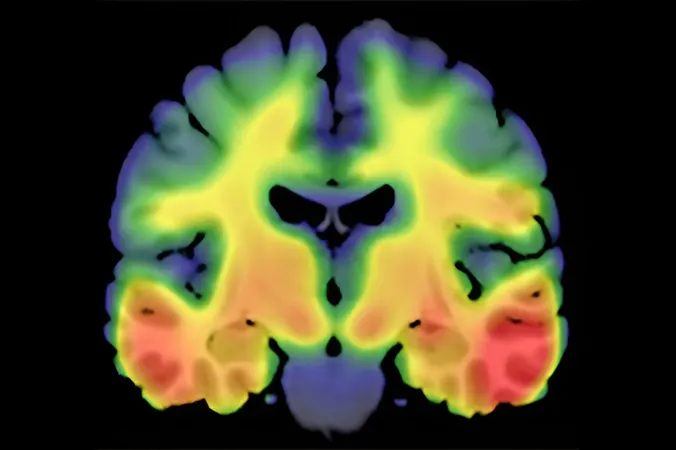
Breakthrough Discovery: New Genetic Marker Could Revolutionize Alzheimer's Treatments!
2024-10-09
Author: Yu
Groundbreaking Discovery at Indiana University School of Medicine
Researchers at Indiana University School of Medicine have made a groundbreaking discovery that could significantly enhance our understanding of Alzheimer's disease. Their recent study, published in the prestigious journal *Nature Communications*, identifies a novel genetic marker that plays a crucial role in the development of this debilitating condition, which is marked by the presence of amyloid-beta plaques and neurofibrillary tau tangles in the brain.
Large-Scale Study Findings
This large-scale study involved an international team analyzing genetic and advanced tau PET imaging data from over 3,000 participants. This makes it the most comprehensive research effort to date examining the genetic basis of PET-detected cortical tau. The researchers pinpointed a specific locus on chromosome 2, known as rs2113389, which accounts for a considerable portion of tau deposition in older adults who are either diagnosed with Alzheimer's or are at risk of developing it.
Insights from the Researchers
Andrew J. Saykin, PsyD, the principal investigator and a prominent figure in the IU School of Medicine, stated, "Identifying this genetic marker opens new avenues for future research and therapeutic interventions aimed at tackling abnormal tau protein forms responsible for tangles in the Alzheimer's brain."
Innovative Research Approach
In stark contrast to prior genome-wide association studies, which focused on comparing the genetic makeup of Alzheimer's patients with cognitively healthy older adults, this research innovatively employed tau PET scans as a continuous measure. This approach not only highlighted the genetic contributions to tau deposition but also revealed that the newly identified variant explains approximately 4.3% of tau burden, even outperforming the well-known APOE4 gene, known to account for 3.6%.
Diverse Study Participants
The study participants were drawn from 12 sites globally, showcasing a diverse demographic range. Some exhibited no cognitive impairment, while others faced mild to severe cognitive challenges. Shannon L. Risacher, Ph.D., co-principal investigator and associate professor at IU, emphasized the need for further validation, stating, "Our next steps involve expanding this research to larger cohorts, as much of our initial work focuses on populations primarily from the U.S., Canada, and Australia."
Future Research Directions
As the team delves deeper into the implications of this genetic marker, they also plan to conduct additional studies using mouse models to investigate the gene's functional behavior. Kwangsik Nho, Ph.D., another co-principal investigator, expressed enthusiasm for the future of this research, stating, "Validating our findings in model systems will be a pivotal step toward facilitating drug development."
Conclusion: A Promising Future for Alzheimer's Research
Ultimately, Saykin and his team are on a mission to combine advanced neuroimaging and genetic research to unravel the mysteries of Alzheimer's disease. "To effectively prevent Alzheimer's, it is crucial that we understand the origins of the plaques and tangles. This study paves the way for early detection and targeted treatments for those at risk."
This exciting discovery not only enhances our understanding of Alzheimer's disease but also signifies a monumental step toward developing effective therapeutics that could potentially transform the lives of millions affected by this condition. As research continues, all eyes will be on the IU School of Medicine team to see how this genetic marker could revolutionize Alzheimer's diagnostics and treatments in the near future. Stay tuned for updates on this vital research!


 Brasil (PT)
Brasil (PT)
 Canada (EN)
Canada (EN)
 Chile (ES)
Chile (ES)
 España (ES)
España (ES)
 France (FR)
France (FR)
 Hong Kong (EN)
Hong Kong (EN)
 Italia (IT)
Italia (IT)
 日本 (JA)
日本 (JA)
 Magyarország (HU)
Magyarország (HU)
 Norge (NO)
Norge (NO)
 Polska (PL)
Polska (PL)
 Schweiz (DE)
Schweiz (DE)
 Singapore (EN)
Singapore (EN)
 Sverige (SV)
Sverige (SV)
 Suomi (FI)
Suomi (FI)
 Türkiye (TR)
Türkiye (TR)